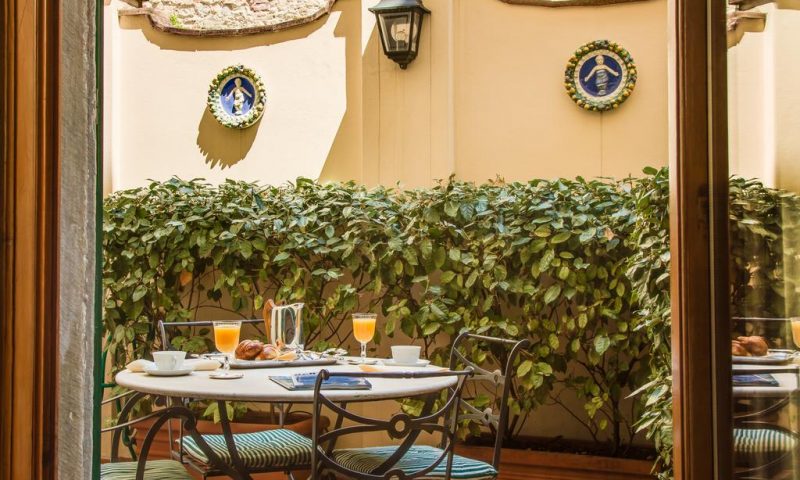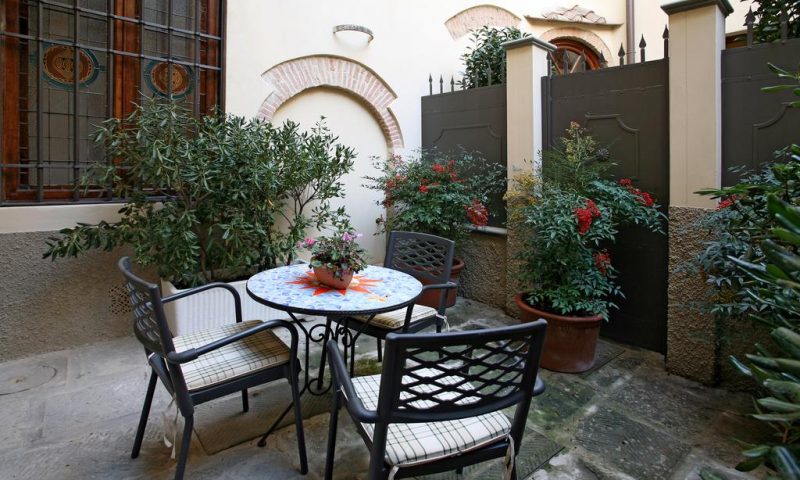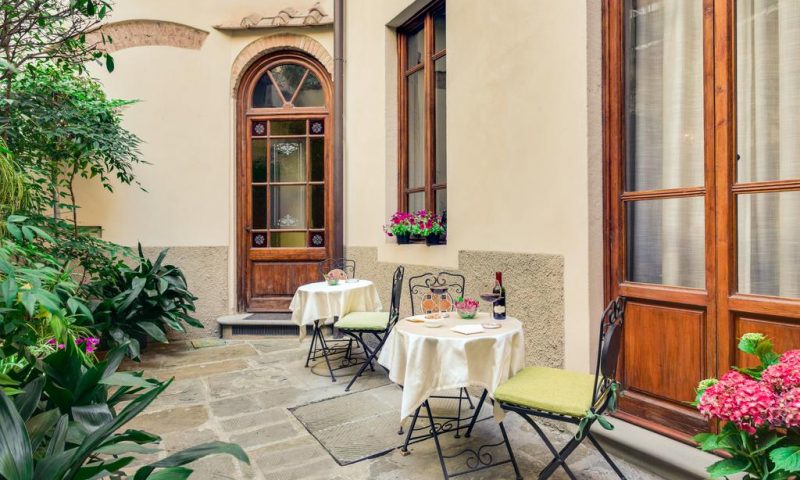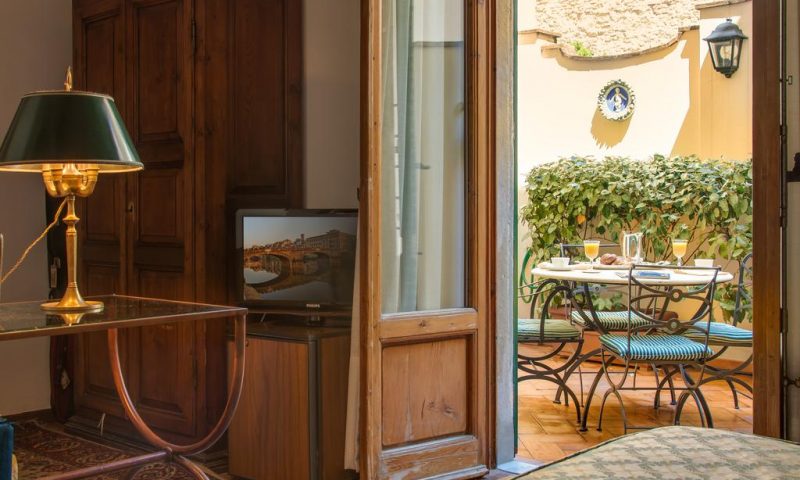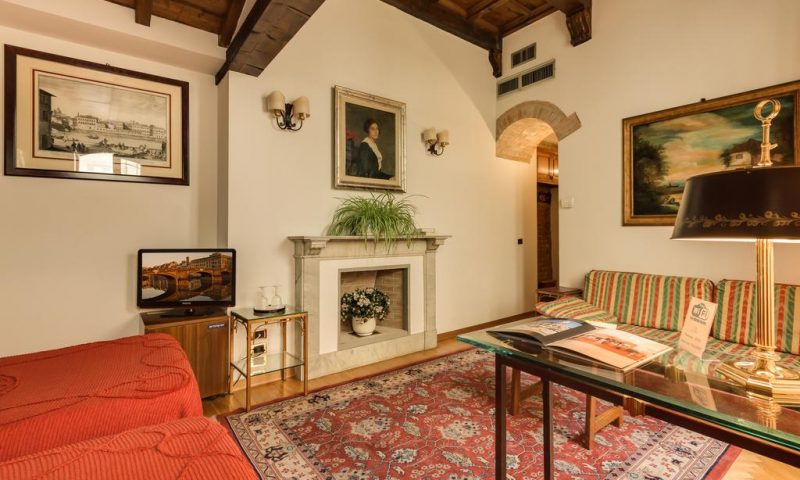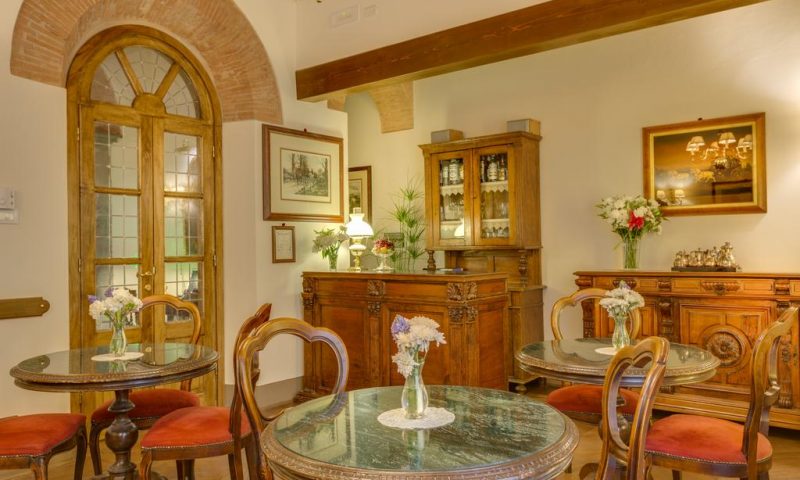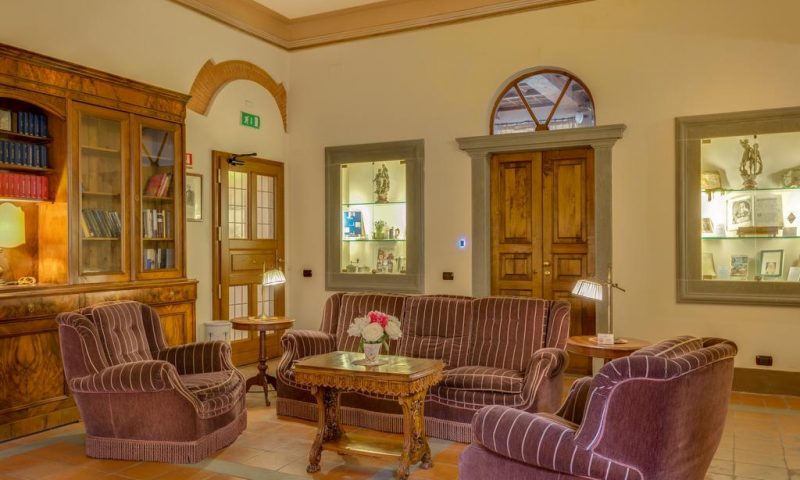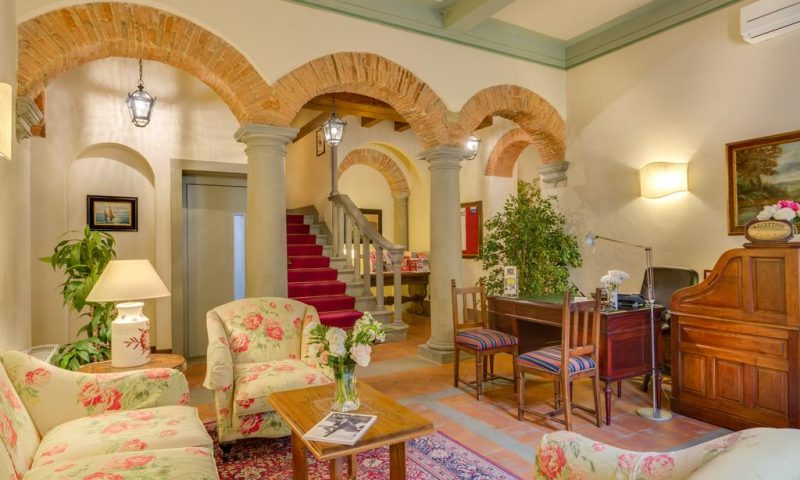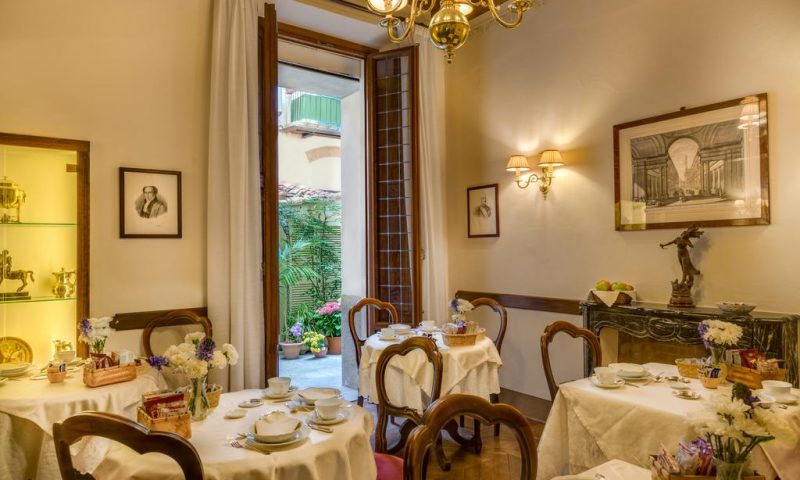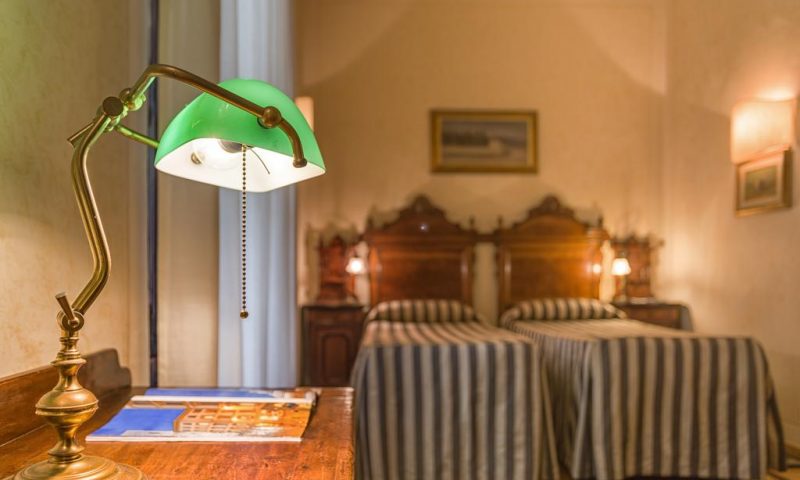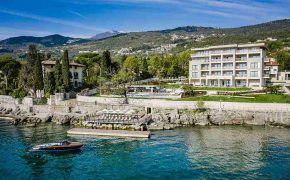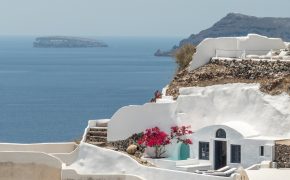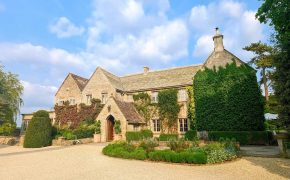A quiet comfortable and distinguished atmosphere in the former convent of the Crocetta, it is today, following an ancient tradition of hospitality, a place where one can enjoy a pleasant and relaxed stay in Florence.
Located in the historical centre of the city next to the Archaeological Museum and a few steps from the Academy of Fine Arts, it is within easy walking distance of every point of artistic, cultural and economic interest.
Here in Via Laura, two historical figures of the Renaissance have left their mark: Lorenzo de’Medici and Sister Domenica of Paradise. Originally it was a country road crossing into some vegetable gardens, thus aptly called Via Verzura corrupted into Via Ventura.
When Lorenzo de’Medici decided to build a residence, the name was changed to Via Laurenziana, then abbreviated to Via Laura. Sister Domenica was the daughter of a farmer from Pian di Ripoli, south of Florence, who worked some lands belonging to the convent of St. Brigida al Paradiso.
Having entered this same convent and taking the name of Sister Domenica del Paradiso, she developed a reputation for sanctity. This didn’t stop her from giving her nuns a useful and practical occupation. She introduced the art of weaving gold and silver cloth with great economic success.
Even though she was a Domenican, she did not agree with Fra’ Girolamo Savonarola whom she never quoted in her writings.
This is why she earned the friendship of Savonarola’s great antagonists, the Medici, who allowed her to buy a large piece of land to one side of Via Laura (where the present building stands) for a mere 190 Florins. In 1511 she began building a new convent, spending some 20.000 gold Florins.
It wasn’t by chance that it was made easy for a Domenican convent, loyal to the Medici, to be built only one block away from Savonarola’s church, S.Marco. Later on, Pope Clement VII, Lorenzo’s nephew (his father, Giuliano de’Medici, was killed in the famous Pazzi conspiracy) was very generous to Sister Domenica of Paradise.
She kept her old name in honour of her former convent though the new one was called the convent of the Crocetta after the small red cross that the nuns wore sewn on their habit. Even the street was called Via della Crocetta for a long period of time.
Along this same street, in 1502 canon Marco Strozzi founded another convent for six devout ladies: S. Maria degli Angeli, afterwards called S. Maria degli Angiolini, near the Palazzo of the Crocetta that later became the Archeological Museum.
On our side of the street, where the Hotel Morandi alla Crocetta now stands, the convent of the Crocetta had its gardens and cloisters. On this site, Sister Domenica of Paradise had a vision of Jesus commemorated by a XVI century tabernacle built to the rear, on Via Giusti.
In the hotel Morandi alla Crocetta, one can admire XVII century frescoes depicting scenes of the life of the blessed Domenica of Paradise. The convent was then enlarged by the devout princess Maria Maddalena de’Medici, daughter of Grand Duke Ferdinand I.
She lived in her Palazzo of the Crocetta, built in 1619, and, in order to visit the nuns more conveniently, she had an overpass built across the street, which can still be seen in Via Laura. The same princess engaged the architect Luigi Orlandi in 1757 to redecorate and modernise the church which contained the remains of the, by now, Blessed Domenica of Paradise.
At the turn of the century, during the suppression of monasteries, the Convent of the Crocetta was requisitioned and after various wanderings, the nuns settled in Via Aretina, transferring the remains of Blessed Domenica of Paradise.
The church was partly demolished and embodied in the building where the school of law of the University of Florence stands, having formerly housed the general archives of finances when Florence was the capital of Italy.
During the same period, as capital of Italy, in order to satisfy the immediate need for housing for the State employees, the cloisters and convent were walled up to create new lodgings. The convent of S. Maria degli Angeli was transformed into a Conservatory by the Lorain Grandukes who later built the further overpass.
At number 48 is the modern entrance of the above mentioned university where the church of the Crocetta used to stand. From number 50 to number 60 are the XIX century facades which cover the cloisters and gardens of the old convent.
At number 64, where a XIX century door opens to the present archives of Real Estate registers, was the location of the famous school of acting founded and directed by the actor and theatre historian Luigi Rasi.
Marino Moretti, a student of that school, having become a poet and narrator, wrote about it in a book called “Via Laura”. Also his friend and writer Aldo Palazzeschi has set one of his “Novels” dedicated to “Sora Cecchina” in Via Laura.
The writer Vasco Pratolini placed the final scene of his Novel “Il quartiere”, with the reconciliation of the two main characters Valerio and Marina, at the corner with Borgo Pinti. Their son will then be called Lorenzo.
In the house at number 56 the famous Florentine short story writer Bruno Cicognani lived and died. He wrote about Via Laura in his “Viaggio nella vita”. The long wall across the streets hides the archaeological museum gardens with its Etruscan tombs and Roman columns, where Gabriele D’annunzio places his “sentimental” initiation (Faville del Maglio).
